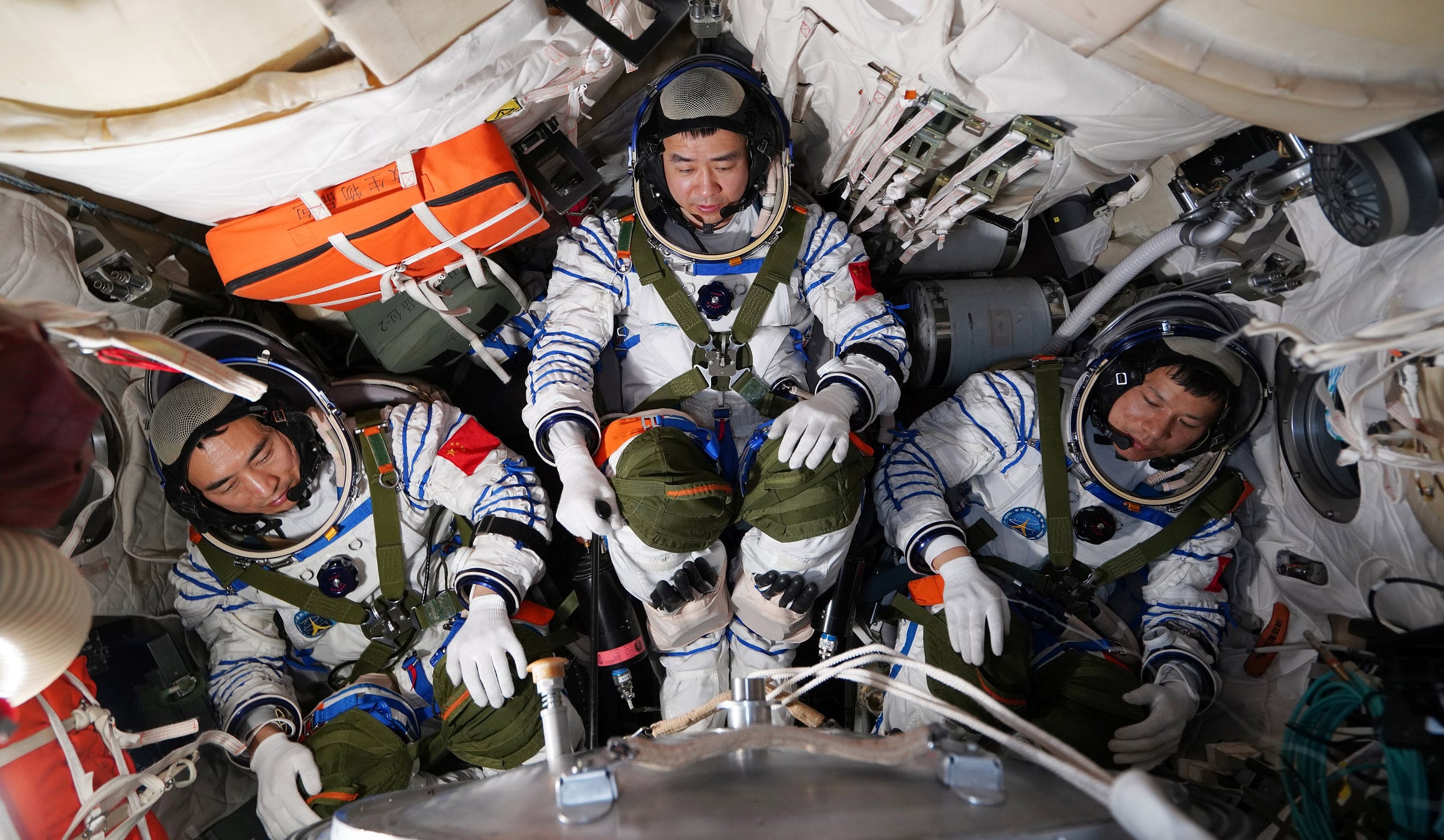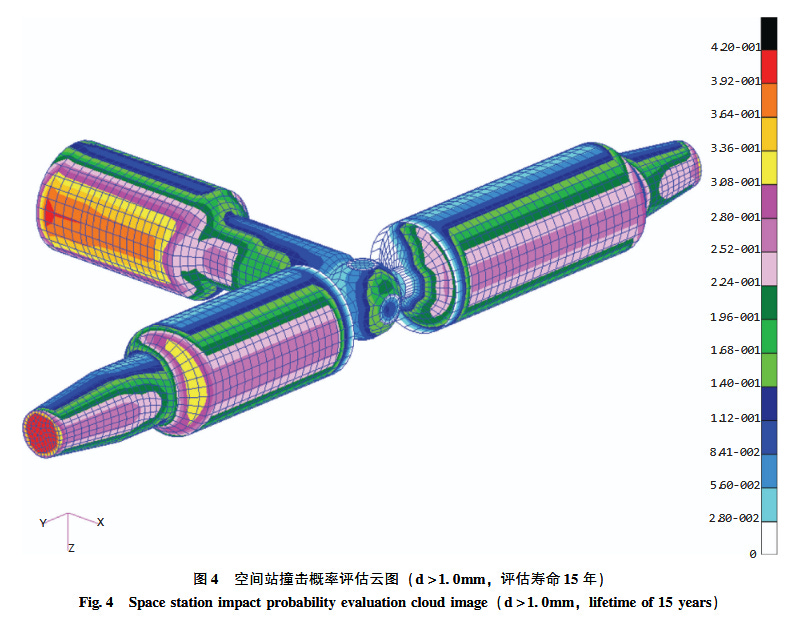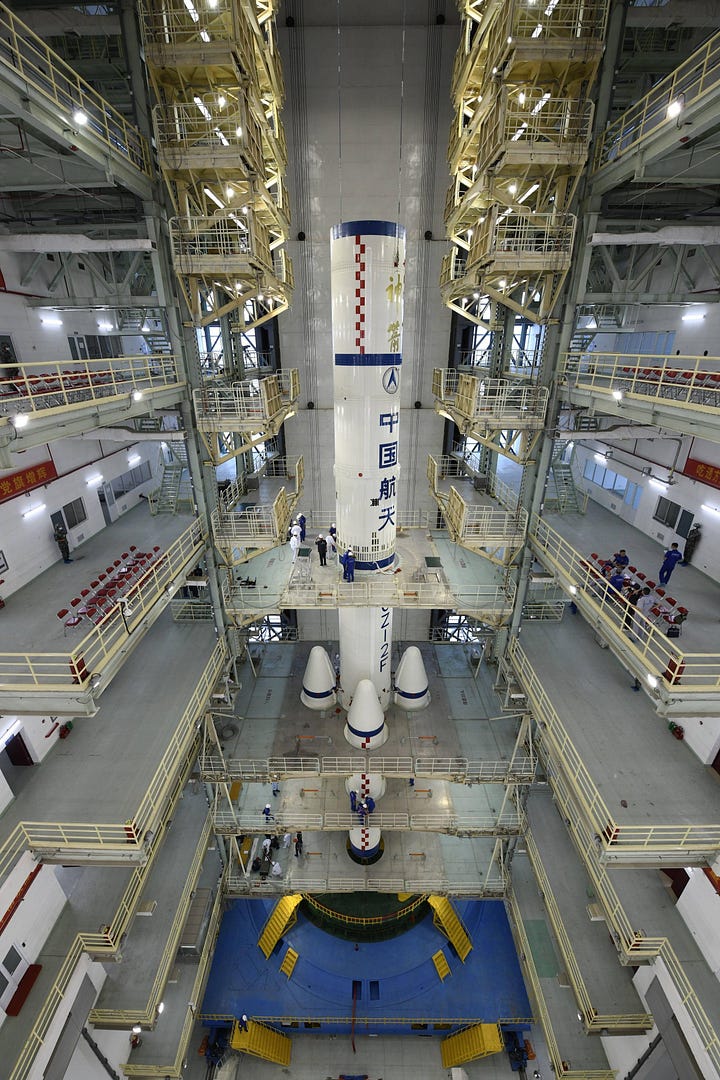What's Happening With the Shenzhou-20 Return Delay?
A return to Earth has been postponed to inspect a possible space debris impact.

After the Shenzhou-21 crew arrived at China’s Tiangong Space Station on November 1st, the Shenzhou-20 trio, Commander Chen Dong (陈冬), Operator Chen Zhongrui (陈中瑞), and Science Operator Wang Jie (王杰), helped the new crew adjust to life in microgravity before handing over management and custodianship to them on November 4th. With those activities, it was expected that the Shenzhou-20 mission would conclude on November 5th.
However, in the morning, before the crew would have returned, the China Manned Space Agency announced the postponement of their return, stating:
“The Shenzhou-20 manned spacecraft is suspected of being struck by a small piece of space debris, and impact analysis and risk assessment are underway. To ensure the safety of the taikonauts and the successful completion of the mission, it has been decided that the return mission of Shenzhou-20, originally scheduled for November 5, will be postponed.”
If there are any problems with this translation please reach out and correct me.
With the postponement, Chen, Chen, and Wang have remained on board Tiangong with a lighter schedule (fewer research and maintenance tasks) than they have had previously, since their launch in April, thanks to the station hosting six people currently. Life support systems on the station are suitable to host both crews for a few weeks, along with supplies onboard, bolstered by deliveries from Tianzhou-9 and Shenzhou-21.
At the time of writing, the China Manned Space Agency has not said which part of the Shenzhou-20 spacecraft may have been struck. Research for the placement of debris protection devices shows that parts of the station facing forward into the orbit are at a moderately high risk of debris impact. This would mean that where Shenzhou-21 is docked1, its service module (with the main propulsion) is at risk, while Shenzhou-202 would have all three modules susceptible to a hit. As such, the Shenzhou-20 spacecraft, after its possible debris strike, may have (this is my speculation): a leak from its orbital module, damage to the ablative skin on the sides of the reentry capsule3, or damage to a system4 on the service module.

In the present moment, a risk assessment for the return of Shenzhou-20 is being conducted by the China Manned Space Agency, with analysis based on data from the spacecraft, cameras outside of the station, and inspections by Tiangong’s robotic arms5, which have cameras fitted. That risk assessment may be completed in the coming days, initiating a return to Earth or the launch of a backup spacecraft.
If the Shenzhou-20 spacecraft is deemed unsuitable to safely return crew, the China Manned Space Agency will activate its rescue spacecraft backup plan, which would occur as follows:
Shenzhou-22’s spacecraft and launch vehicle are prepared for launch and rolled to the launch site.
The uncrewed Shenzhou-20 spacecraft undocks and leaves the proximity of Tiangong.
Shenzhou-22 launches and docks uncrewed to Tiangong at Tianhe’s Earth-facing port.
The Shenzhou-21 crew moves their items to Shenzhou-22, and the Shenzhou-20 crew moves their items (currently on Tiangong) to Shenzhou-21.
Shenzhou-20 crew departs Tiangong in the Shenzhou-21 spacecraft.
The Shenzhou-21 spacecraft returns to Earth and is recovered along with the Shenzhou-20 crew.
The Shenzhou-21 crew remains on Tiangong with the Shenzhou-22 spacecraft, while a new backup is prepared expeditiously to maintain emergency plans.
To date, this plan has never been implemented before, but it has been prepared since Shenzhou-12. A backup Long March 2F/G launch vehicle and Shenzhou spacecraft are kept at the Jiuquan Satellite Launch Center in a constant standby state for the duration of a crewed mission (arriving two months before their backup need), later assigned to the next mission if the one it served as a backup for was successful. The backup plan can be prepared for launch in as little as 8.5 days and arrive at Tiangong between 3.5 and 7 hours after liftoff.


A potential return of the Shenzhou-20 crew or launch of the Shenzhou-22 spacecraft may occur after November 10th, based on notices for a launch of CAS Space’s Kinetica-1 and Galactic Energy’s Ceres-1 from Jiuquan. Kinetica-1’s notices were originally set for November 7th, after the original Shenzhou-20 return date, before being moved to November 14th and then being set for the current date.
As for the possible effects on Tiangong’s future schedule, if Shenzhou-20 returns as planned, there will be no change. But if Shenzhou-22 is launched and the Shenzhou-21 spacecraft returns them, the Shenzhou-21 crew could be on Tiangong for a few more weeks to months, depending on spacecraft readiness for future missions. It is unknown if the use of backup plans with Shenzhou-22 will affect an upcoming year-long stay or Pakistan’s visit to Tiangong.
Tianhe’s forward-facing docking port.
Docked at Tianhe’s Earth-facing docking port.
This is why the reentry capsule turns from silver to black as it returns to Earth.
Electrical or propellant-related.
A ten-meter arm sent up on the outside of Tianhe and a five-meter arm delivered with Wentian, they can be combined into a fifteen-meter-long arm.



Nice SitRep of situation.